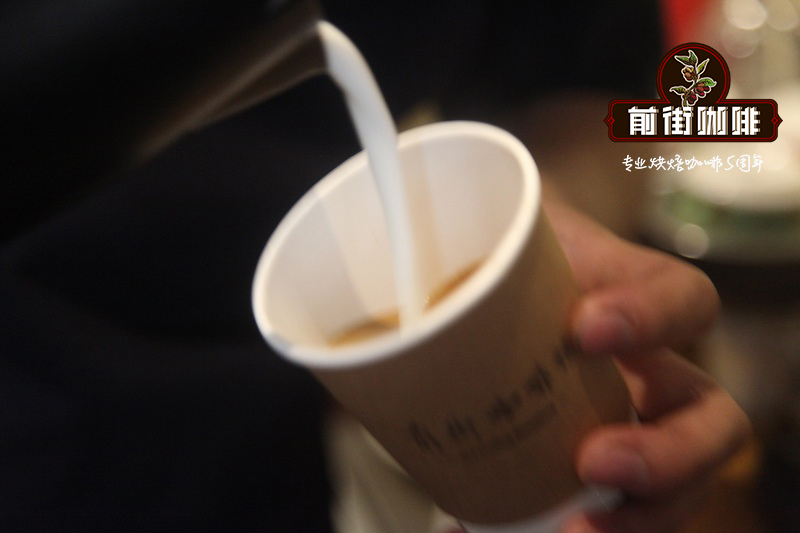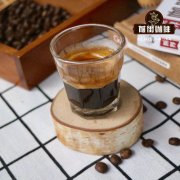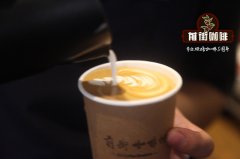Introduction to the treatment of coffee beans with red honey in Banafiscio Manor, Brumas processing Plant, Costa Rica

Professional coffee knowledge exchange more coffee bean information please follow the coffee workshop (Wechat official account cafe_style)
Treatment of Red Honey in Banafiscio Manor of Brumas processing Plant in the Central Valley of Costa Rica
Costa Rica central valley Brumas El Beneficio RH
Flavor description:
Gaoshan pear, raspberry mixed with coffee ripe fruit aroma,
The entrance is the sweet and sour taste of plum mixed with asparagus juice.
Chocolate hazelnut sauce is very sweet.
Brumas Microprocessing Plant (Brumas del Zurqui) nicknamed "Honey King"
Almost everyone in Taiwan's boutique coffee industry is familiar with it.
Won the Cup of Excellence Cup in 2012.
Don't miss the Honey King, who must drink it every year.
National Costa Rica (Costa Rica)
The valley in the middle of the producing area (West Valley), the micro-producing area of San Isidro
Location Costa Rica, Heredia, San Isidro, San Francisco
Microprocessing plant Brumas del Zurqui
Alvarado Rodriguez, the landowner.
Year of establishment 2002
1600 m above sea level
Planting varieties (this batch is Hongkaduai)
Treatment method red honey treatment
Brumas del zurqui, which won the National Coffee Competition in Costa Rica in 2006, means "Valley full of clouds". Juan Ramon Alvarado, the owner of the estate, has a degree in agriculture from EARTH University, and his wife Natalia, a fourth-generation coffee farmer, set up the Brumas microprocessor in 2004, producing about 750 bags of coffee a year.
He used the BRIX meter to measure sugar to determine the best harvest time for coffee cherries, and according to Juan Ramon's test results, the best flavor point for sweet and sour balance was when the sugar content reached 15.5%. After the coffee is picked, the peel is removed, and the pulp scraping machine is used to control the degree of peeling the flesh, retaining a certain degree of sticky pulp layer (mucilage). Then, different from the traditional washing treatment, it does not need fermentation to remove the sticky pulp layer, on the contrary, it is allowed to dry directly with this layer of slime, and then the sticky layer and shell (parchment) are removed directly.
Juan Ramon calls the coffee produced by this treatment Honey Coffee, which has low acidity, increased complexity and rich sweet flavor. Through a stable, uniform and careful exposure process, the surrounding residual pectin sugars and alcohols increase sweetness and fuller texture through diffusion, and then dry in a net bed. The water consumption of this treatment is only 5% of that of the traditional washing plant, and it can be made without a huge washing tank and exposure square. The display of flavor depends on the degree of retention of the pulp, challenging the careful skill and courage of the treater. although in the process of treatment, there will be too much drying failure and mildew, uneven exposure or too rapid overfermentation. But this new treatment has become popular in Central America in recent years and has shone brilliantly in all kinds of coffee competitions.
END
Important Notice :
前街咖啡 FrontStreet Coffee has moved to new addredd:
FrontStreet Coffee Address: 315,Donghua East Road,GuangZhou
Tel:020 38364473
- Prev

Grill the flavor of Brazilian coffee and Malawi coffee and their output value
Professional coffee knowledge exchange more coffee bean information please pay attention to the coffee workshop (Wechat official account cafe_style) Malawi (Malawi) well-known representative coffee: Malawi is a small country in southeastern Africa, is also a landlocked country not near the sea, its coffee is mostly grown in the northern plateau, but the production is not large. But although it is not near the sea, it is on the map.
- Next

Information introduction of Java sun-cured coffee beans in Nicaraguan forest manor _ flavor characteristics of Java coffee
Professional coffee knowledge exchange more coffee bean information please follow the coffee workshop (Wechat official account cafe_style) Nicaraguan forest manor micro-batch Java species sun Finca El Bosque Microlot Java Natural ■ country: Nicaragua ■ production area: Nueva Segovia ■ altitude: 1250-1560 m ■ treatment: sun ■ grade: SHG
Related
- Detailed explanation of Jadeite planting Land in Panamanian Jadeite Manor introduction to the grading system of Jadeite competitive bidding, Red bid, Green bid and Rose Summer
- Story of Coffee planting in Brenka region of Costa Rica Stonehenge Manor anaerobic heavy honey treatment of flavor mouth
- What's on the barrel of Blue Mountain Coffee beans?
- Can American coffee also pull flowers? How to use hot American style to pull out a good-looking pattern?
- Can you make a cold extract with coffee beans? What is the right proportion for cold-extracted coffee formula?
- Indonesian PWN Gold Mandrine Coffee Origin Features Flavor How to Chong? Mandolin coffee is American.
- A brief introduction to the flavor characteristics of Brazilian yellow bourbon coffee beans
- What is the effect of different water quality on the flavor of cold-extracted coffee? What kind of water is best for brewing coffee?
- Why do you think of Rose Summer whenever you mention Panamanian coffee?
- Introduction to the characteristics of authentic blue mountain coffee bean producing areas? What is the CIB Coffee Authority in Jamaica?

